Which watch brand is worth your money? It’s a question that has fueled more debates than we can count over the years, from forum threads that spiral into brand wars to group chats where everyone suddenly becomes an expert in horology. Some folks swear by Seiko, others champion the latest microbrand, and there’s always someone preaching the gospel of “just save for a Rolex.” After almost a decade of hands-on reviews, from entry-level quartz beaters to Grand Seikos that redefine finishing at their price point, we’ve learned one thing: the best watch brands aren’t about logos or social status signaling. They’re about how they feel on the wrist, how they hold up after real wear, and whether they make you smile when you glance at the time.
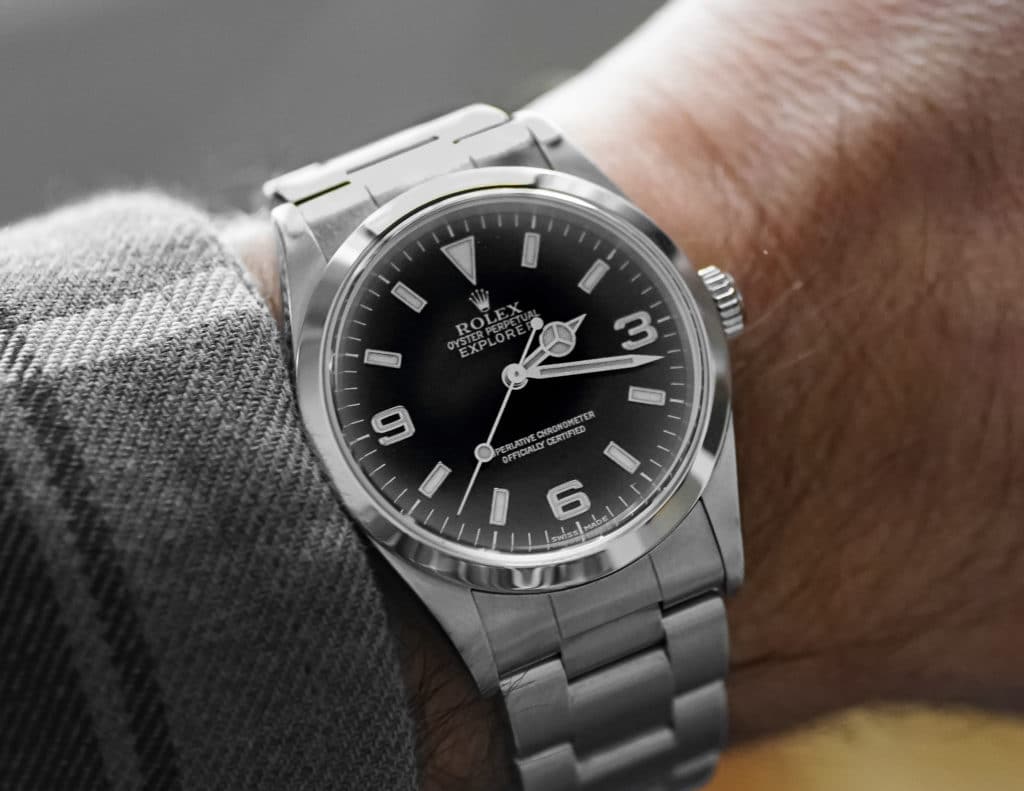
This list is built entirely on watches we’ve worn, tested, and lived with, not press release copy-pastes or spec sheets. We’ve measured lume brightness in dark rooms, timed accuracy over weeks, and seen how bracelets age after a summer of sweat and sunscreen. Whether you’re spending $200 or $5,000, these are the best watch brands that consistently deliver on value, design, and reliability.
We’re constantly testing new releases and up-and-coming names, so if there’s a brand you think deserves a spot here, drop it in the comments. We’ll do our best to get it on the wrist and give it a fair review.
Seiko
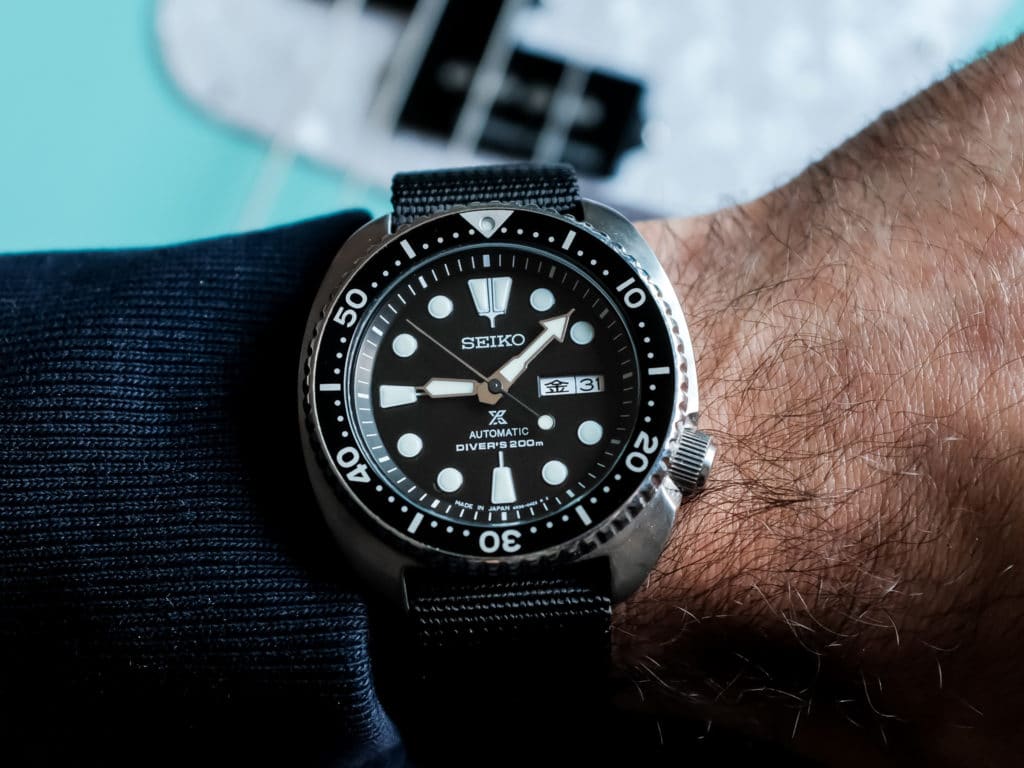
Seiko has been at it since 1881, and that history still shapes everything they make, from accessible automatics to higher-end Prospex divers and refined dress watches. After years of hands-on reviews, what stands out most is Seiko’s consistency. Their cases wear better than they measure, bezels feel intentional, and Lumibrite continues to set the standard for night-time legibility. Even workhorse movements like the 4R36 and 4R34 don’t always meet chronometer specifications, but they are always dependable. These aspects show Seiko’s focus on long-term reliability over hype.
Across different price points, Seiko has an uncanny ability to blend practicality with character. The Seiko Turtle, for instance, proved how a 44.3mm diver can feel unexpectedly balanced on the wrist despite its short lug-to-lug span (as seen in our review). The Seiko 5 GMT demonstrated that useful complications can exist without unnecessary flash. During our time testing the watch, the 24-hour bezel and GMT hand felt intuitive to use, especially on longer trips. And personal experiences with the Seiko Tank SUP880 reminded us that Seiko can do elegant design as well as utilitarian, with proportions and finishing that rival far pricier dress options.
Pros
- Wide range of mechanical and quartz options spanning everyday, dive, and dress styles.
- Excellent Lumibrite performance and consistently comfortable case ergonomics.
- In-house movements that hack, hand-wind, and stay reliable through real-world wear.
- Strong value retention across decades of evolving collections.
- Proven durability: Many models in our reviews have survived years of daily use with minimal wear.
Cons
- Hardlex crystal is still commonly used instead of sapphire on many models, which is a drawback in terms of scratch resistance.
- Accuracy can vary between units and calibers.
- Some mid-range models exhibit uneven finishing or alignment issues, as noted in past TBWS reviews.
Citizen
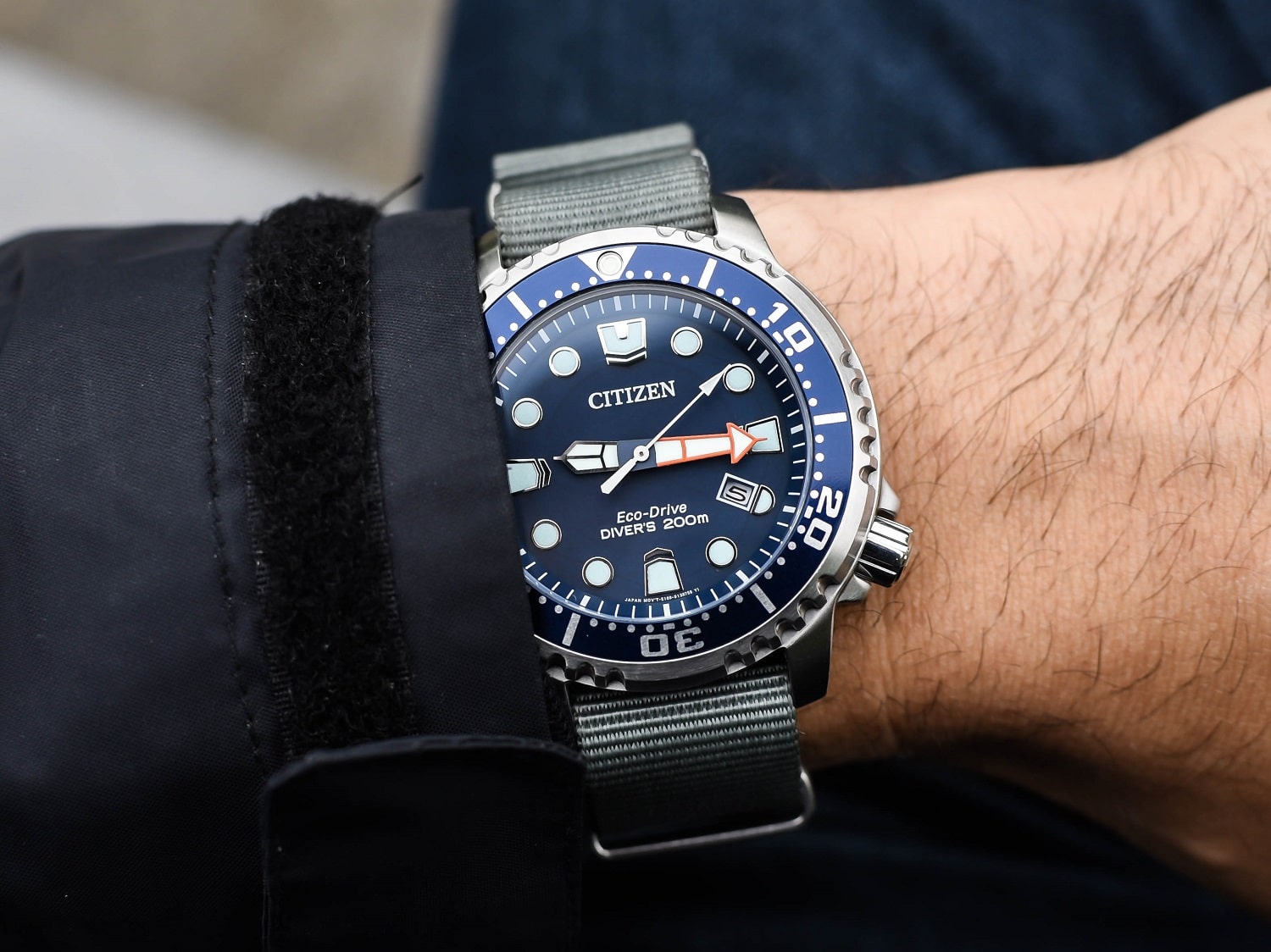
Citizen has been refining its approach to watchmaking for over a century, and that experience shows in how smoothly it blends technical innovation with everyday practicality. The brand’s Eco-Drive solar technology remains one of the most reliable systems we’ve tested: light-powered, low-maintenance, and impressively consistent even after years of wear. In our hands-on review of the Citizen Promaster Diver (BN0151-09L), that dependability was backed by substance: a 43 mm case with compact lugs, solid 200m water resistance, and a bright enough aqua tone lume. The bezel action was smooth (though it could be less slippery), and the E168 movement ran within specification over months of use. It’s the kind of diver that quietly earns trust through reliability rather than spectacle.
The Citizen NY008-11E Fugu carried that same philosophy into the mechanical realm, powered by the automatic 8203 caliber; it proved rugged and practical, even without hacking. Our review team appreciated its easy-grip bezel and distinct dial layout during testing, both of which lent it serious tool-watch credibility. On the quirkier side, the Ana-Digi Temp we tested reminded us that Citizen still embraces fun, with its 1980s dual-display charm balanced by precise timekeeping and innovative functionality. And the Avion AW1361-10H showcased Citizen’s eye for proportion: a legible, comfortable pilot watch that never feels derivative. Across solar, mechanical, and hybrid categories, Citizen’s strength lies in refinement through repetition: every model feels deliberate, durable, and designed to last long after the novelty fades.
Pros
- Eco-Drive solar tech eliminates battery swaps and is dependable.
- Mechanical models demonstrate that Citizen can also excel in traditional watchmaking.
- Strong durability and build consistency across types (dive, pilot, hybrid).
- Functional design prioritizes legibility and comfort over gimmicks.
Cons
- A heavy reliance on solar energy (sometimes to the exclusion of mechanical systems) may not satisfy purists.
- Mineral crystals are still common in many models instead of sapphires.
- Older automatics often lack hacking or modern upgrade features.
Casio
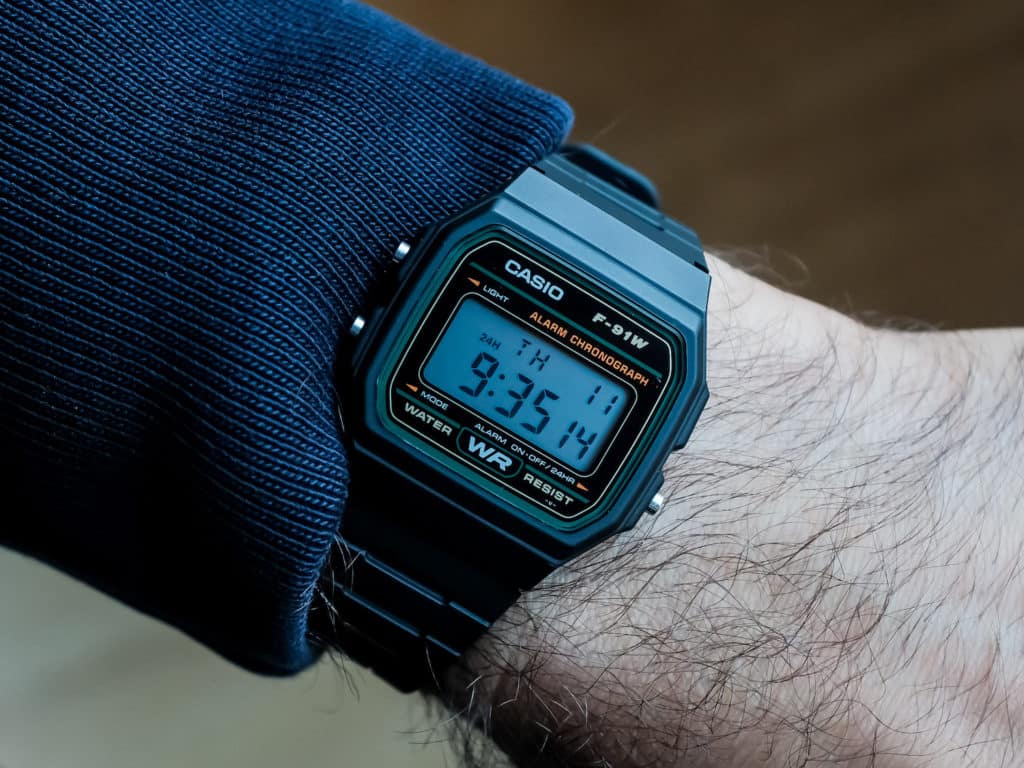
When it comes to digital durability and nostalgia-driven design, Casio proves that even the best watch brands don’t need to be expensive to be timeless. Since the 1970s, it has defined what a digital watch should be: tough, practical, and oddly charming in its simplicity. What we’ve learned after testing everything from the humble F91W to solar and radio-controlled models is that Casio doesn’t focus on luxury; it focuses on reliability. Buttons are placed precisely where they should be, screens balance multiple functions without chaos, and materials, while lightweight, hold up through years of use. In our review of the F91W, we found that even this $20 icon still embodies the best of Casio’s philosophy: accurate to within +/- 30 seconds per month, legible under any lighting, and comfortable enough to disappear on the wrist. It’s the kind of design that hasn’t needed changing for three decades because it works.
Step up a little, and that same philosophy carries through in more advanced models. The Wave Ceptor (WV-59DJ-1AJF) we tested incorporated atomic timekeeping into a stainless steel case that was both lightweight and never cheap. That’s proof that Casio’s tech-first mindset scales without compromising usability. During our hands-on time with the A168WA, it became clear that retro charm doesn’t mean compromise, offering excellent backlight visibility, responsive buttons, and the familiar brushed-metal bracelet. Across the board, Casio watches don’t pretend to be luxury; they’re tools that happen to make you smile every time you strap one on.
Pros
- Iconic retro styling that still feels practical and relevant today.
- Deep horological roots with decades of digital innovation behind every model.
- Thoughtful material choices that balance toughness, comfort, and cost.
- Outstanding real-world functionality packed into lightweight, durable cases.
- A broad range of models, each offering unique features and character.
Cons
- Metal bracelets can feel flimsy compared to the watch’s overall quality.
- Strap replacements often require adapters or minor modifications.
Timex
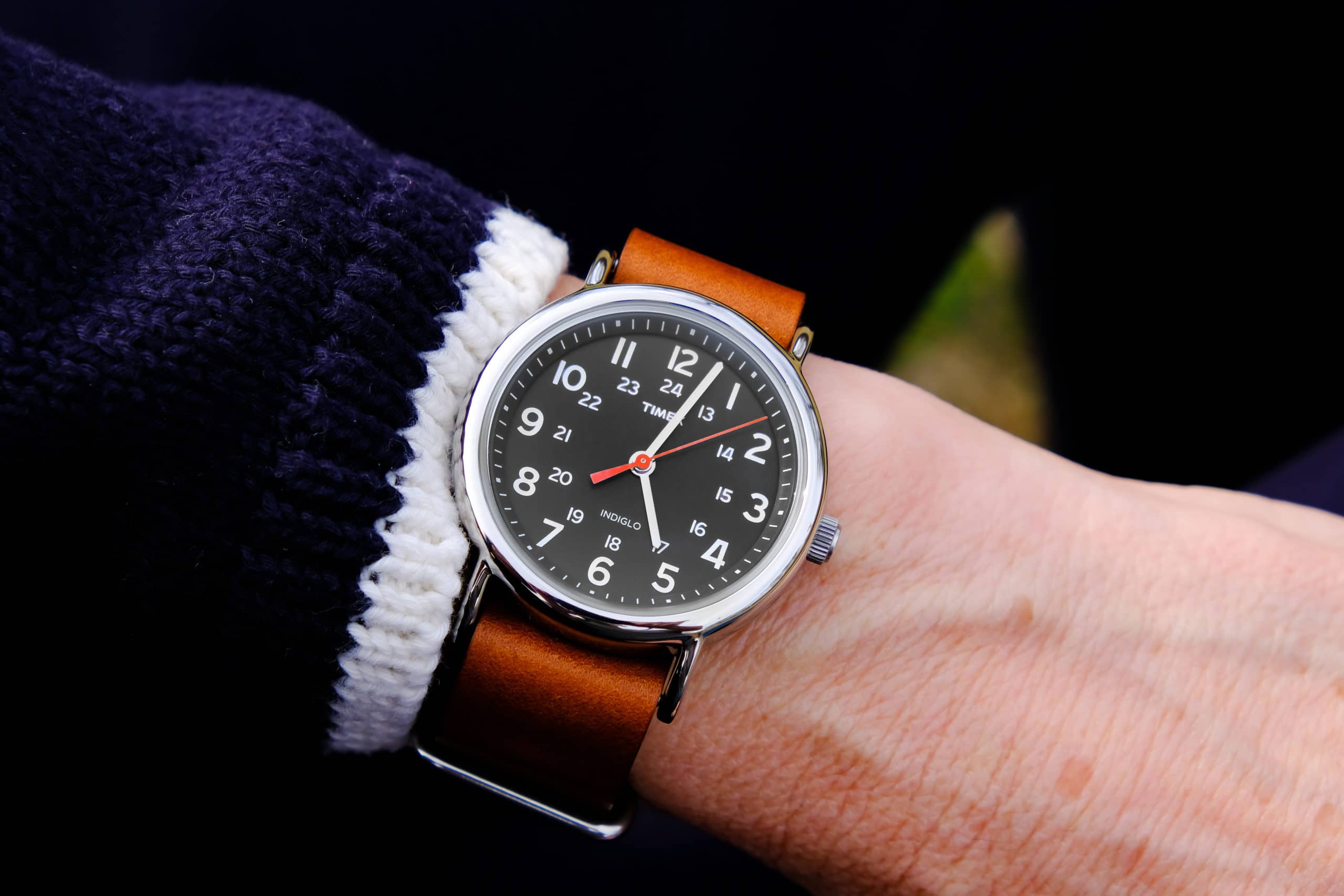
Timex has been building watches since the mid-1800s. The company’s strength has always been in practicality, building timepieces that are easy to wear, easy to read, and dependable through everyday use. That ethos was clearly evident across models in our hands-on testing. For instance, the Weekender, with its 38 mm case and clean dial, reminded us during testing that simplicity is often the best design choice; it’s light, legible, and paired with a strap system that makes swapping styles effortless. The Expedition Field Chronograph brought a touch of rugged utility during our hands-on review, featuring crisp sub-dials and proportions that balance presence and comfort.
What ties all these models together is Timex’s ability to stay grounded in function. The brand’s Indiglo backlight remains one of the most evenly illuminated systems we’ve seen, its dials are uncluttered and easy to read in any condition, and case sizes generally hit that sweet spot between vintage wearability and modern presence. Materials like brass or acrylic might sound modest, but in use, they keep the watches light and comfortable. Timex does dabble in mechanical pieces, but in our experience, the quartz models are where the brand hits its stride: reliable and low-maintenance.
Pros
- Deep American watchmaking heritage with over a century of consistent production.
- Quartz models deliver dependable accuracy and low-maintenance ownership.
- Excellent Indiglo backlight: bright, evenly lit, and genuinely helpful in low light.
- Comfortable sizing and ergonomic case shapes across field, dress, and casual lines.
- Thoughtful dial layouts that prioritize legibility and everyday practicality.
Cons
- Mostly quartz-powered, leaving little appeal for mechanical purists.
- Brass or plated cases can show wear faster than stainless steel.
- Occasional second-hand misalignment across specific models.
- Conservative styling that can feel reserved next to more experimental brands.
G-Shock
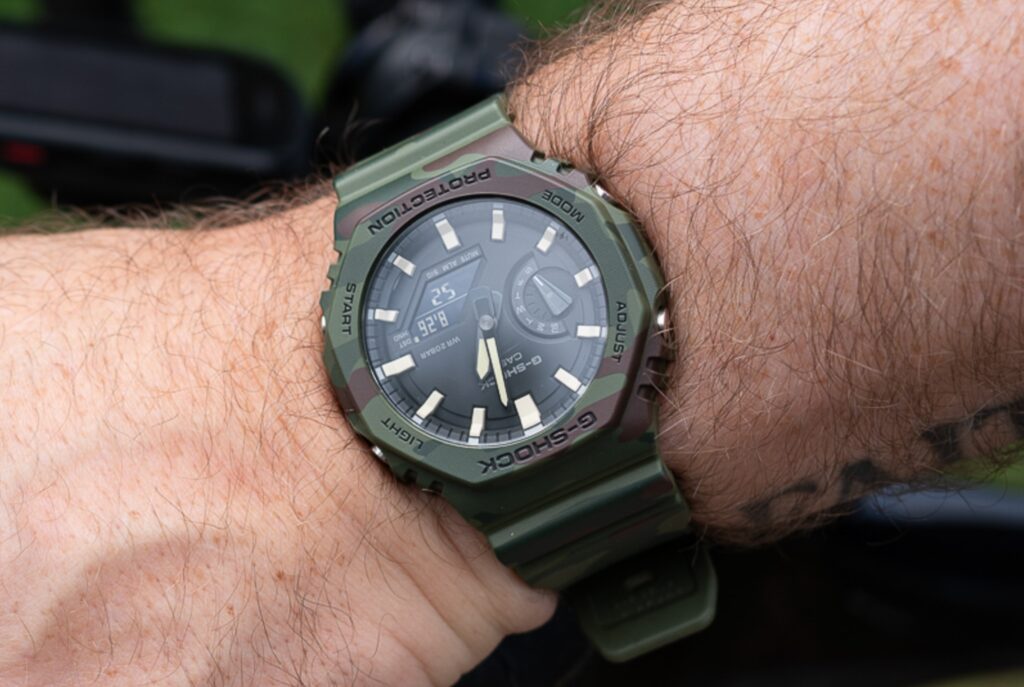
Few of the best watch brands can match G-Shock’s relentless focus on toughness and functionality. Since its debut in the 1980s, the line has remained true to its founding mission: to build a watch that can withstand a beating no human could. That philosophy still drives the design: from resin and carbon cases that absorb impact to steel-reinforced structures that make these products nearly indestructible. In our hands-on testing, we’ve thrown, dropped, and submerged G-Shocks, and they’ve shrugged it all off every time. The DW9052-1V, for instance, proved that even the brand’s entry-level models retain the same uncompromising durability and functionality as the premium lines. Oversized buttons and a clear digital display make it easy to use, even with gloves on, a small but meaningful detail we noticed during daily wear.
Step up to models like the Mudmaster GG-1000-1A5 and you start to see (as we did) how G-Shock scales its toughness with purpose. Dual sensors for temperature and direction, massive pushers sealed against dirt, and a structure that feels more like gear than jewelry. And then there’s the CasiOak, which we found during our hands-on testing took all that toughness and translated it into something slimmer, wearable, and stylish. It’s the kind of G-Shock that can live on your wrist outside of the trail or job site. Still, that ruggedness comes with trade-offs: they’re thick, bold, and not cuff-friendly. But in return, you get a watch that feels ready for anything: a small tank that happens to tell time, too.
Pros
- Benchmark-level shock resistance and long-term reliability.
- Thoughtful control layouts designed for real-world, gloved use.
- Wide range of models spanning field, outdoor, tactical, and everyday wear.
- Solar, Bluetooth, and sensor integrations across many modern references.
Cons
- Bulky dimensions can limit versatility under sleeves.
- Digital-heavy aesthetics are not suited for all occasions.
- A steeper learning curve for getting used to complex multi-function displays.
Orient
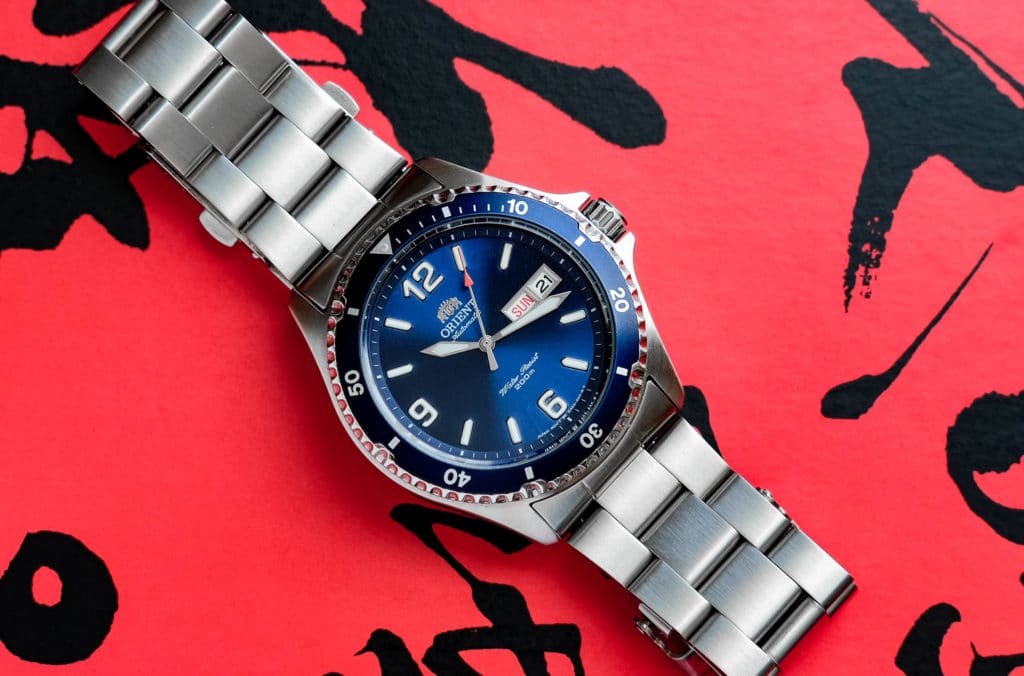
Orient may not carry the same mainstream recognition as Seiko or Citizen, but among enthusiasts who’ve spent real wrist time with their pieces, it has earned a loyal following for good reason. It was founded in Japan in the early 1900s, and later developed its own in-house automatic movements. Among the best watch brands in the entry-level mechanical category, Orient offers unmatched charm and mechanical authenticity.
Across our wrist time, the Mako II and Kamasu have been the standouts: both bring crisp applied markers, confident 200m water resistance, and finishing that looks a tier above. The Kamasu’s sapphire and snappy crown action felt especially dialed in during our hands-on testing, while the Mako II gave us personal insight into how a straightforward diver can work day after day. Not every detail lands (bracelets can feel partly hollow), but the core experience is solid: easy to read, easy to live with, and mechanically satisfying.
On the dressier side, the Bambino still nails the brief: domed crystal, balanced proportions, and dials with enough personality to avoid costume-watch vibes. Accuracy can vary slightly from watch to watch, but the calibers have proven steady with regular wear and minimal fuss. What keeps us coming back is simple: Orient builds mechanical watches with character, then backs them up with specs and wearability that hold up long after the honeymoon phase has passed.
Pros
- In-house automatic movements across key lines.
- Dive models with 200m WR, strong lume, and sharp case/dial finishing.
- Sapphire crystals are available in many models, even at prices below $300, and feature confident crown action.
- A distinct design language, ranging from sporty divers to clean dress pieces.
Cons
- Bracelets/clasps can feel basic.
- Some older models still ship with mineral crystals.
- Accuracy variance between units.
- 21mm lug width on some models
Baltic
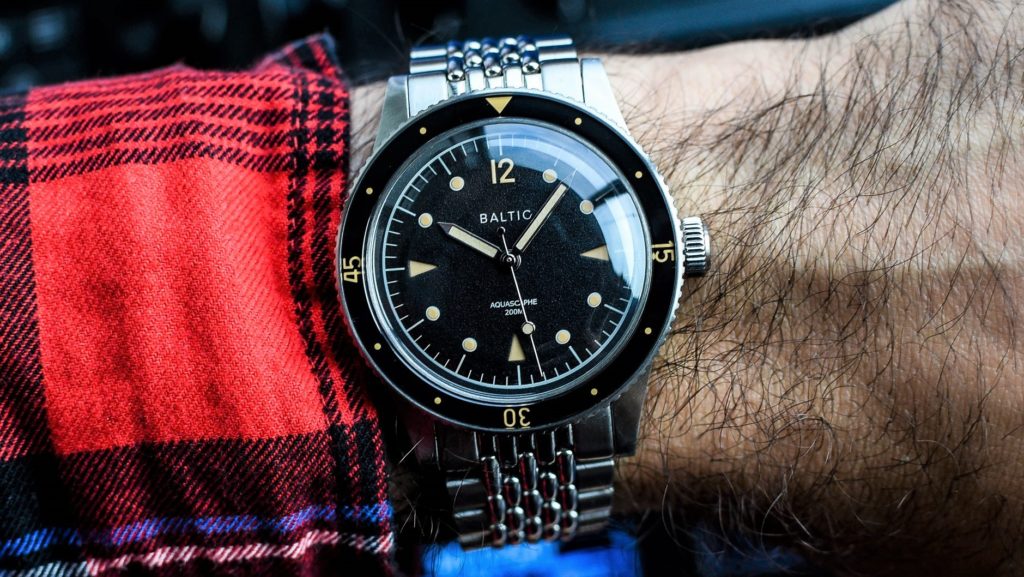
Baltic has grown into one of the few microbrands that consistently delivers on its promise with thoughtful design, solid execution, and a clear sense of identity. Every model we’ve worn has felt intentional, not like a mashup of vintage cues or borrowed design language. The Aquascaphe was our first clue that Baltic was the real deal. Based on our personal experiences with it, the case finishing felt mature for the price, and the proportions made it one of the most comfortable-wearing 39mm watches we’ve handled. It isn’t a tank; you’ll notice more polished surfaces than bead-blasted grit, but it never feels fragile either.
Then came the MR01, Baltic’s take on a small, hand-wound dress watch that doesn’t feel fragile or pretentious. The dial finishing, especially the grain texture and applied numerals, feels like something out of a much higher tier, which really impressed our review team. In use, the compact 36 mm size wears naturally and comfortably, although winding can feel a little stiff at times (a minor trade-off for its slim, mechanical charm). The Hermetique Tourer we tested hands-on rounds out the lineup with a more modern field-watch approach. In our review, the integrated crown and fully sealed case design offered surprising practicality, while the brushed surfaces gave it a grounded, toolish feel. Across all three, Baltic’s consistency is what stands out; every detail, from case finishing to typography, feels considered.
Pros
- Excellent case finishing and dial texture are consistently present across models.
- Comfortable, well-balanced sizing and proportions.
- Distinct design identity with strong vintage cues.
- Consistent quality control and attention to detail.
Cons
- Hand-wound MR01 can feel stiff to wind.
- Water resistance and robustness are not as aggressive as dedicated tool watches.
- Movement origins (e.g., Hangzhou in MR01) may divide purists.
- Minimal AR coating on some crystals affects legibility in bright light.
Nodus
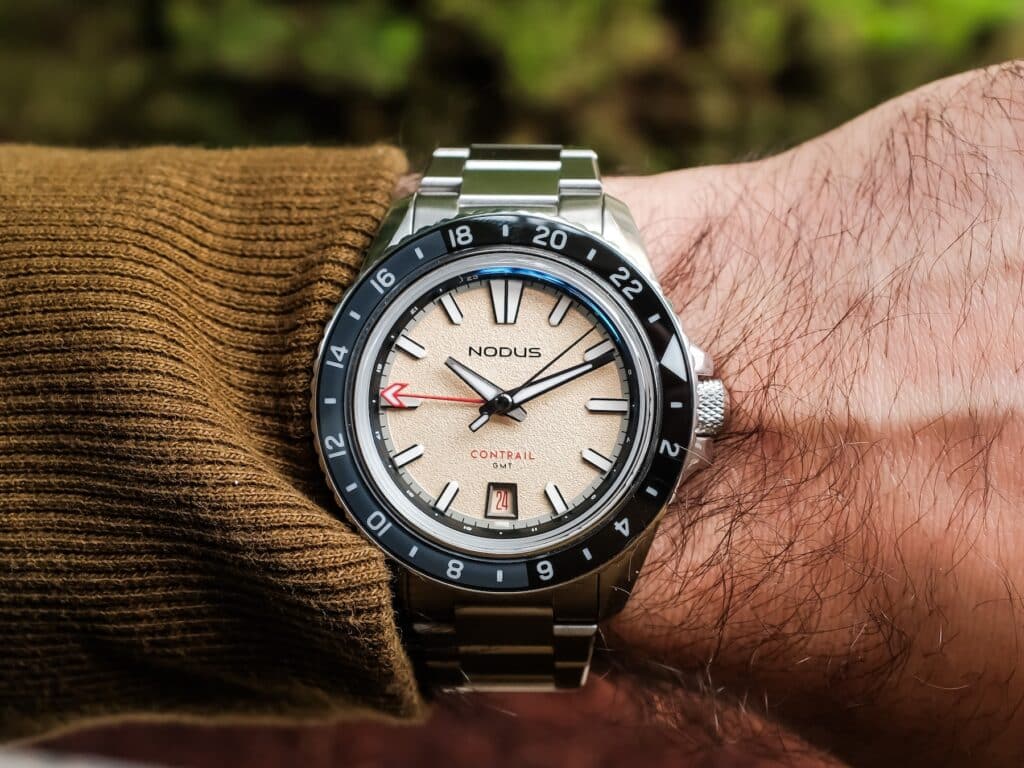
Since launching in 2017, Nodus has become one of the most dependable names in the microbrand space, not because of flashy marketing. What stands out in our reviews is how well Nodus translates thoughtful design into tangible wrist comfort and usability. Based in Los Angeles, the brand’s design language sits somewhere between tool-watch pragmatism and mid-century inspiration. The Raven TrailTrekker (a collaboration between Nodus and Raven watches), for example, surprised us during our review with its case geometry: rugged, sharp, but never overbuilt, and a bracelet that stayed secure even on long hikes.
The Contrail GMT, meanwhile, demonstrated during our testing how the brand strikes a balance between functionality and restraint: a clean, legible dial paired with a travel-ready GMT complication that doesn’t try to make a “statement” piece. The Sector Deep pushed that same ethos further for our review team, showing Nodus’ ability to deliver serious dive specs like 500m of water resistance, excellent BGW9 Super-LumiNova lume, and more, without losing proportion or charm.
Across all of these modesl, the common thread is attention to detail. Finishing is consistently tight, bezels engage with precision, and their NodeX micro-adjust clasp remains one of the easiest, most practical systems we’ve tested. No tools, no fuss, just instant comfort adjustment on the wrist. We’ve noticed some bracelets can feel a bit chunky on smaller wrists, but the improvement over earlier iterations is clear. After years of hands-on testing, Nodus feels like a brand that has matured beyond proving itself.
Pros
- Strong case architecture and finishing consistency across models.
- Excellent NodeX clasp micro-adjust system: intuitive and reliable.
- Distinct, cohesive design identity with practical proportions.
- Reliable Seiko-based automatic movements tuned in-house.
- Robust dive ratings (up to 500m) with well-executed lume performance.
Cons
- Bracelets and clasps can feel bulky on smaller wrists.
- Limited aesthetic variety outside core tool-watch styles.
- Bold, modern designs may not suit traditional or minimalist preferences.
- Limited production runs can make specific models harder to find.
Scurfa
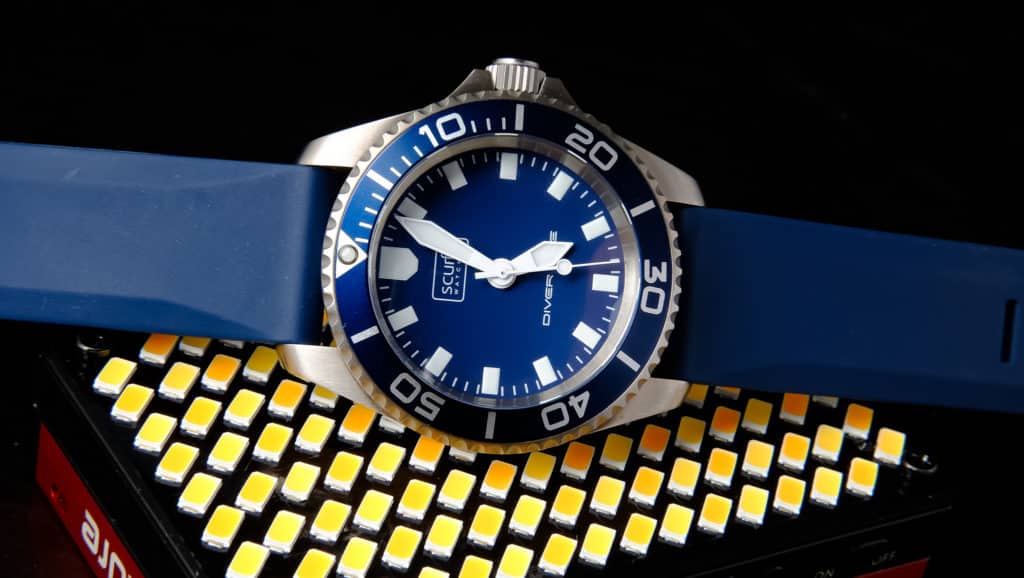
Scurfa isn’t a brand trying to look like a dive watch company; it is one, built by an actual saturation diver who needed a watch that could survive real dives, not desk diving. That origin is immediately apparent once you wear one. Everything feels deliberate: cases are compact but substantial, bezels grip cleanly even with gloves, and crowns screw down with a satisfying resistance that inspires confidence. In our hands-on time with the Titanium Diver One, it became clear that Scurfa builds watches for use first and marketing second. The titanium case kept the weight down during long days, and the Super Luminova BGW9 lume performance was the kind of thing you could notice even in daylight.
Nothing about their watches feels ornamental; every surface, angle, and function exists to serve a purpose. That utilitarian honesty is what makes Scurfa stand out. The dials are crisp, highly legible, and never cluttered; the straps are designed to perform, not impress; and movements, whether quartz or automatic, are chosen for reliability over prestige. Sure, you won’t find luxury finishing or fashion appeal here, and the design can feel more “tool” than “showpiece,” but that’s the point we discovered after multiple reviews.
Pros
- Designed by a professional saturation diver with real-world input.
- High specs below $300.
- Excellent ergonomics and a bezel grip that remains secure even under pressure or with gloves.
- Durable, purpose-built design with zero unnecessary frills.
Cons
- Quartz-dominant lineup may deter mechanical enthusiasts.
- Limited stylistic range, with designs focusing almost exclusively on dive functionality.
- Still relatively niche in recognition outside tool-watch circles.
- Straps overprioritize performance over visual flair.
Tissot
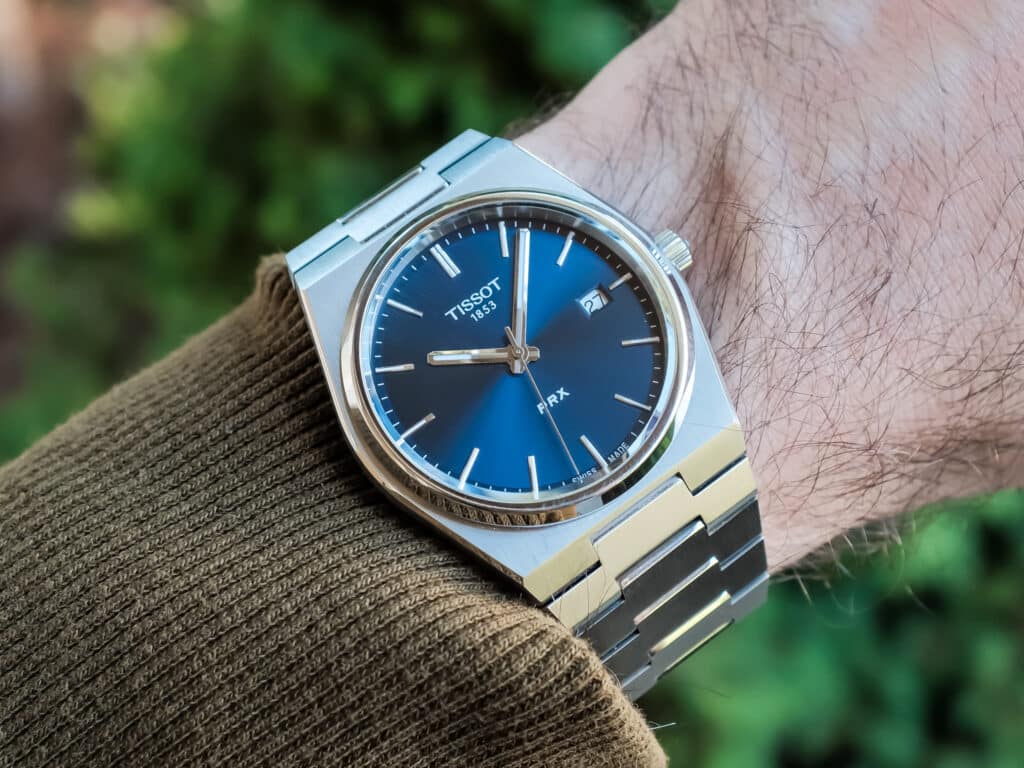
Tissot leans into Swiss prestige with real-world execution that keeps many of us collectors curious. In our PRX review, we spent weeks wearing it alongside Japanese integrated-bracelet rivals. What stood out was not just how it looked, but how the bracelet and case tolerances felt. The edges are crisp, the bracelet links articulate smoothly, and the quick-release spring bars make strap changes effortless. Our review team was also pleasantly surprised that, despite being a push-pull crown (not a screw-down), Tissot still manages 100m of water resistance. That’s a balance of flair and usability that is rarely seen so cleanly executed. The 40 mm version may feel slightly large on smaller wrists, and the lume isn’t the brightest in its class, but the overall impression is of a brand that’s willing to invest in thoughtful details at each tier.
Tissot’s strength lies in swagger backed by substance. The PRX lineup shows the brand understands the appeal of both quartz convenience and mechanical complexity with the same core design, different experiences. Across variants you’re getting a sapphire crystal, so the real trade-off is quartz accuracy/zero upkeep versus the Powermatic 80’s sweep and 80-hour reserve (with thickness and servicing to consider).
Pros
- Excellent finishing and tight tolerances rival those of its more expensive Swiss peers.
- Strong design versatility; works in sporty and dressy contexts.
- Swiss-made movements and brand heritage add tangible credibility.
- Thoughtful user-friendly touches (e.g., quick-release straps, reliable water resistance).
Cons
- Lume brightness and longevity are modest compared to dedicated tool divers.
- The push-pull crown is a practical compromise for water resistance, but not ideal.
- Some versions’ glass and power reserve trade-offs feel conservative for the price point.
Hamilton
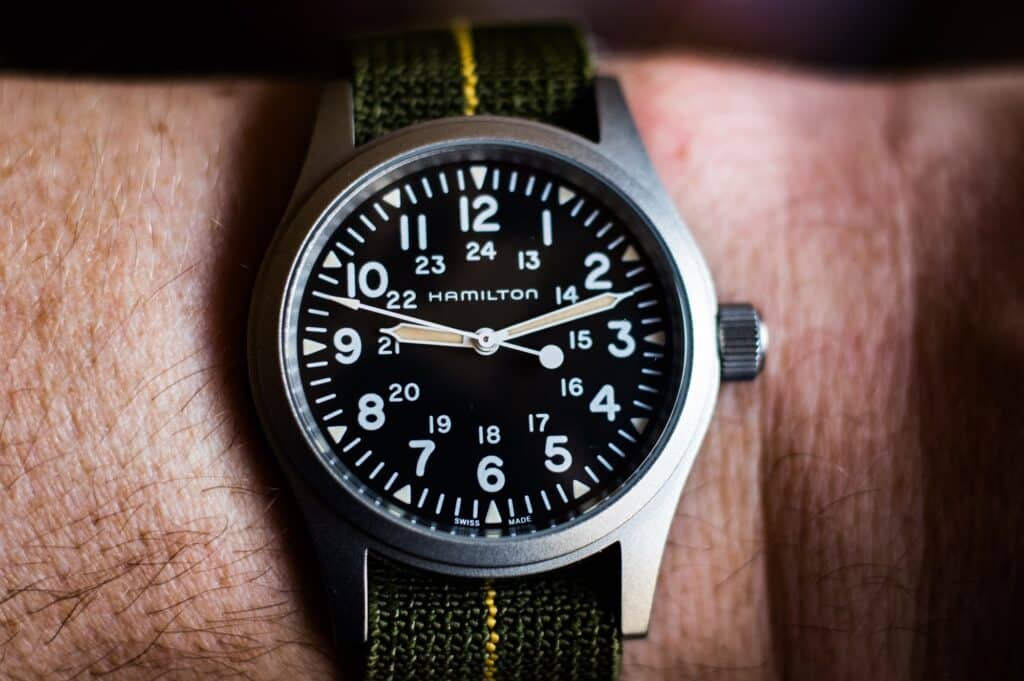
Hamilton is one of those brands that manages to carry its American roots into Swiss-made precision without feeling conflicted about either. It was founded in 1892 and is now part of the Swatch Group. The brand has maintained a consistent thread of purpose-driven design, a quality we’ve experienced firsthand in the Khaki Field Mechanical. From the first wind, you get the sense that this isn’t a watch built for display cases. The resistance of the crown, the matte dial, and those oversized Arabic numerals all reinforce the brand’s military DNA. On the wrist, the 38 mm case size and slim profile hit a sweet spot, giving it a grounded, vintage-correct presence that still feels modern in everyday wear. The H-50 movement’s extended 80-hour power reserve proved helpful during testing. We left it off for a weekend, came back Monday, and it was still ticking. Accuracy hovered around ±10 seconds per day in our experience, which seems fair for a hand-wound field watch intended for wear.
What makes Hamilton work as a brand is its consistency across purpose and presentation. The brushed finish on the case, the bead-blasted texture, and the neutral tones all make it versatile enough to wear with almost anything, except a tuxedo. Sure, the daily winding routine and lack of date may put off those who prefer quartz convenience, and the lume fades quicker than you’d expect, but those quirks are part of what makes it charming. Hamilton doesn’t hide its heritage behind gloss; it refines it enough to keep things relevant without losing the essence of the story.
Pros
- Durable, military-inspired designs that balance style and function.
- Blends authentic American heritage with modern Swiss craftsmanship.
- Dependable movements offering long power reserves for daily wear.
Cons
- Priced higher than some comparable field-watch alternatives.
- Users report occasional accuracy inconsistencies.
Bulova
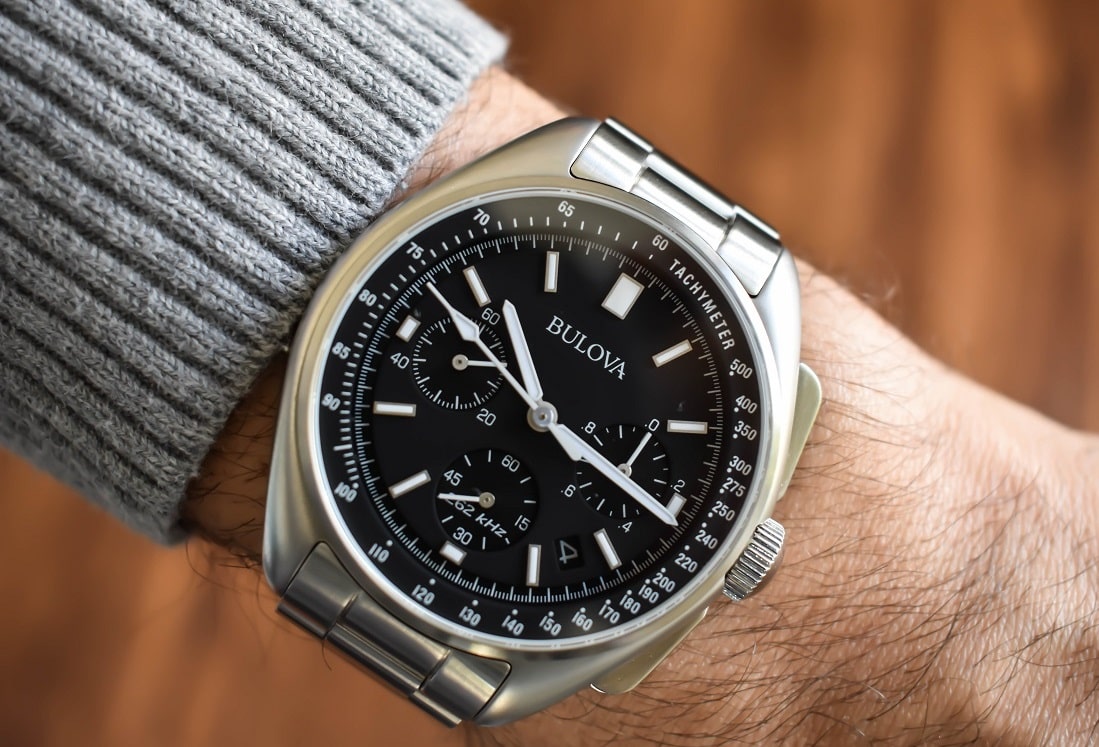
Bulova is one of those brands that straddles the line between bold design and technical flair. In our hands-on time with models like the Lunar Pilot and Marine Star, the contrast between these ambitions and some compromises becomes very clear. The Lunar Pilot impressed our review team with its 45 mm case, which somehow wears more balanced than its size suggests; the fluid lug geometry and subtle curves tone down the bulk. Its high-frequency quartz movement (262 kHz) also lived up to the hype in our testing, with accuracy measured to within approximately ±10 seconds per year, which is rare territory. That said, the bracelet finishing felt mismatched (a detail we couldn’t unsee), and the 50 m water resistance remains modest for a sporty chronograph.
The Marine Star Chronograph, which our team also tested, added a different dimension to what Bulova can do. It’s a sportier, more versatile aesthetic that leans into its diver roots. In use, the case profile and dial layout delivered a strong wrist presence without overreaching. But in reviewing it, we noticed one odd design choice: a 1/20th second counter that felt largely cosmetic when compared to the smooth sweep of the Lunar Pilot’s seconds hand. Even then, models like these demonstrate that Bulova is willing to blend design flair with performance intent.
Pros
- High-frequency quartz movement delivering exceptional accuracy.
- Bold, clean dial layouts with strong legibility (e.g., in the Lunar Pilot).
- Balanced proportions that mask larger specs on the wrist.
- Sporty versatility with models mixing chronograph and diver styling.
Cons
- Bracelet finishing and integration sometimes fall short of case quality.
- Sports functions, such as 1/20th-second sub-dials, can feel superficial.
- Some chronograph models exhibit modest water resistance, which limits their dive utility.
Longines
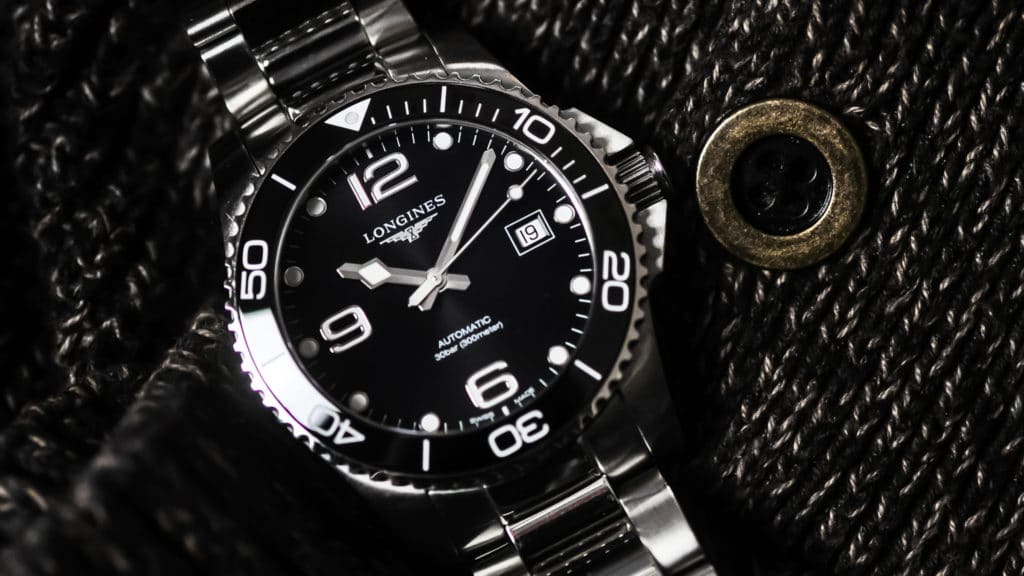
Longines occupies an interesting space: a heritage-rich Swiss brand that consistently delivers refinement without shouting about its luxury. Our hands-on experience has reinforced a consistent theme: Longines prioritizes balance. The HydroConquest, for example, suits a true modern diver, but with the polish and restraint that we determined during testing made it feel equally at home both on land and underwater. The ceramic bezel feels crisp, and the L888 automatic movement proved accurate and smooth during testing. The brand’s case finishing is not flashy, but precise in a way that becomes more noticeable over time.
The Heritage Classic Sector, which our team spent significant time reviewing, captured a different side of Longines’ character: restrained, almost academic in its design discipline. The sector dial is one of the few in this price segment that genuinely looks vintage without pretense. On the wrist, its 38.5 mm size and flat profile made it comfortable for all-day wear, and the finishing on the hands and markers showed Longines’ knack for quiet detail. If there’s a trade-off, it’s that some models can feel conservative next to more daring peers, and the brand’s effort to cover both dress and sport segments sometimes results in overlap.
Pros
- Refined finishing and detailing across both sport and dress collections.
- L888 automatic and HAQ quartz movements offer impressive accuracy.
- Strong heritage design language that feels authentic, not imitative.
- Consistent quality control and material execution (bezels, hands, dials).
Cons
- Some designs lean conservative and may lack boldness for adventurous buyers.
- Overlap across lines can blur distinctions between models.
- Servicing costs are relatively high compared to similar-tier brands.
Nomos
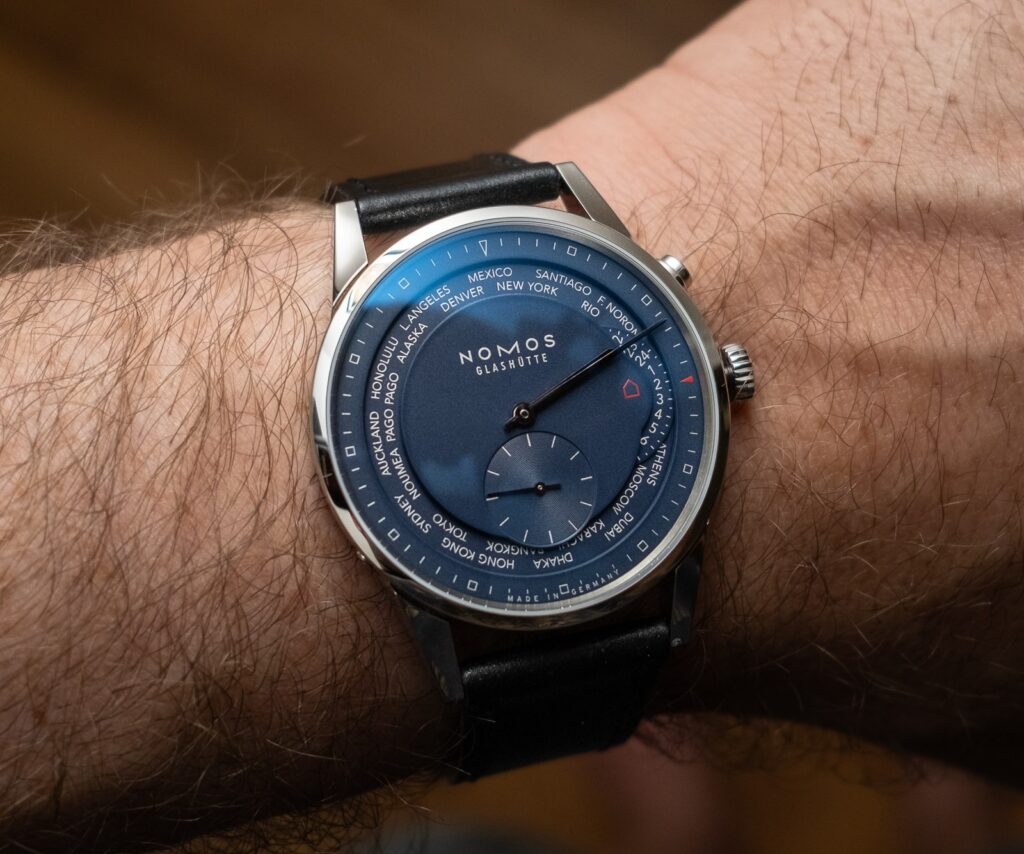
Nomos Glashütte has built its reputation on restraint: design that whispers rather than shouts, precision that feels deliberate rather than clinical. From our personal testing experience with the Zürich World Time, that philosophy was clear from the first wind. The case finishing is almost surgical in its precision, but softened by the subtle curvature of the lugs and the texture of the dial. The world-time complication, usually a cluttered mess on other watches, is distilled into something so intuitive you can operate it once and never think twice again. The in-house DUW 5201 movement, visible through the sapphire back, is as tidy as the rest of the watch; beautifully decorated, and impressively slim. It’s the kind of craftsmanship that reminds you Nomos builds watches for people who appreciate calm perfection.
When our team reflected on buying a Nomos abroad, it highlighted how deliberate the brand is, not only in design but in how it presents itself. The boutique itself felt modest rather than ornate, and the staff didn’t lean on theatrics. The watch came out, the strap swap happened, and that was that. That low-key confidence is baked into everything Nomos does. Every model we’ve worn feels purpose-driven, from clean typography and balanced dimensions to polished hands that catch light enough to stay readable. However, that minimalism can feel too disciplined for those who prefer visual flair, and smaller case sizes won’t suit everyone.
Pros
- Intuitive world-time complication on GMT models that’s easy to use and read.
- Excellent finishing and in-house movement craftsmanship.
- Brand experience built on authenticity and understated confidence.
Cons
- Long lugs can make some models wear larger than expected.
- Limited water resistance restricts everyday rugged use.
- Highly polished cases show wear easily.
- Pricing climbs outside Europe due to taxes and import costs.
Grand Seiko
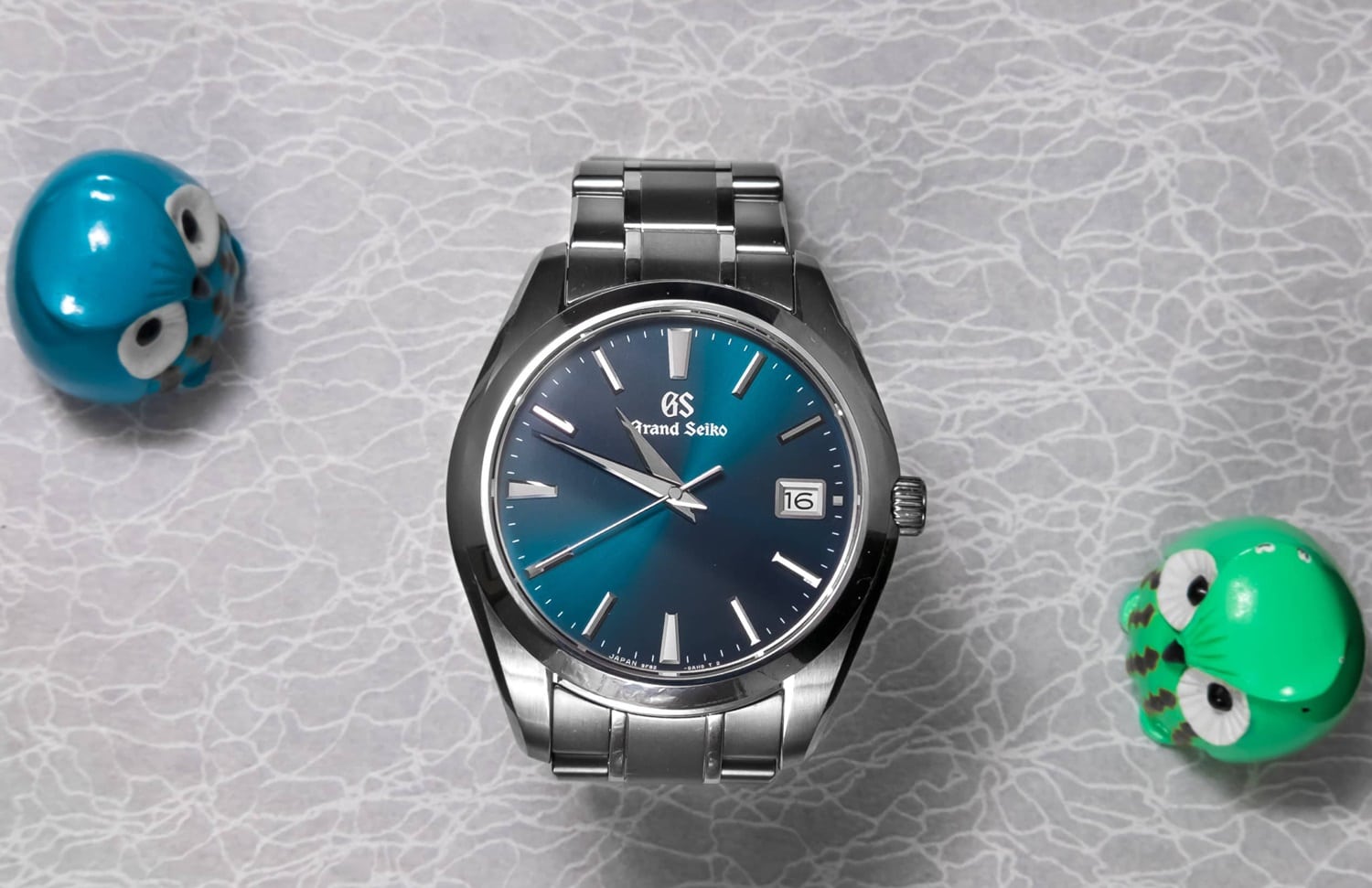
Grand Seiko doesn’t build watches to impress from across the room. They make them to impress when you’re six inches away, staring at the dial under good light. That’s something our team has experienced repeatedly across years of wearing and reviewing their models. The SBGV233 quartz, for instance, reminded us how Grand Seiko turns what’s often dismissed as “entry-level” into something extraordinary. The brushed and polished surfaces meet at razor-sharp transitions, the seconds hand lands on every marker, and the finishing on the hands is so crisp it almost feels over-engineered. While it is a quartz movement powers it, he tactile experience, the weight, the texture of the crown, and the clarity of the dial deliver more satisfaction than many mechanical watches in the same price range. It’s also worth mentioning that this is probably one of the highest quality quartz movements we’ve ever reviewed.
Then there’s the SBGH295 Sōkō Frost, which shows how refined Grand Seiko’s mechanical side has become. During our dedicated wrist time, the 40 mm case felt balanced, and the 9S85 high-beat movement delivered the signature smooth sweep we’ve come to associate with the brand’s craftsmanship. The dial finishing, inspired by the first frost of autumn near Kyoto, appears alive with subtle texture, devoid of unnecessary gloss. That said, both watches reflect a core Grand Seiko truth: these pieces demand appreciation up close. They’re less about flash and more about the quiet reward of precision, proportion, and texture.
Pros
- Flawless Zaratsu case finishing with distortion-free mirror surfaces.
- Exceptional dial texture and detailing across both quartz and mechanical lines.
- High-beat and 9F quartz movements deliver world-class accuracy and longevity.
- Finishing and quality rival or exceed many Swiss luxury competitors.
Cons
- Polished surfaces attract fingerprints and micro-scratches easily.
- Design language can feel overly restrained for flashier tastes.
- Servicing and parts access can be costly outside Japan.
Tag Heuer
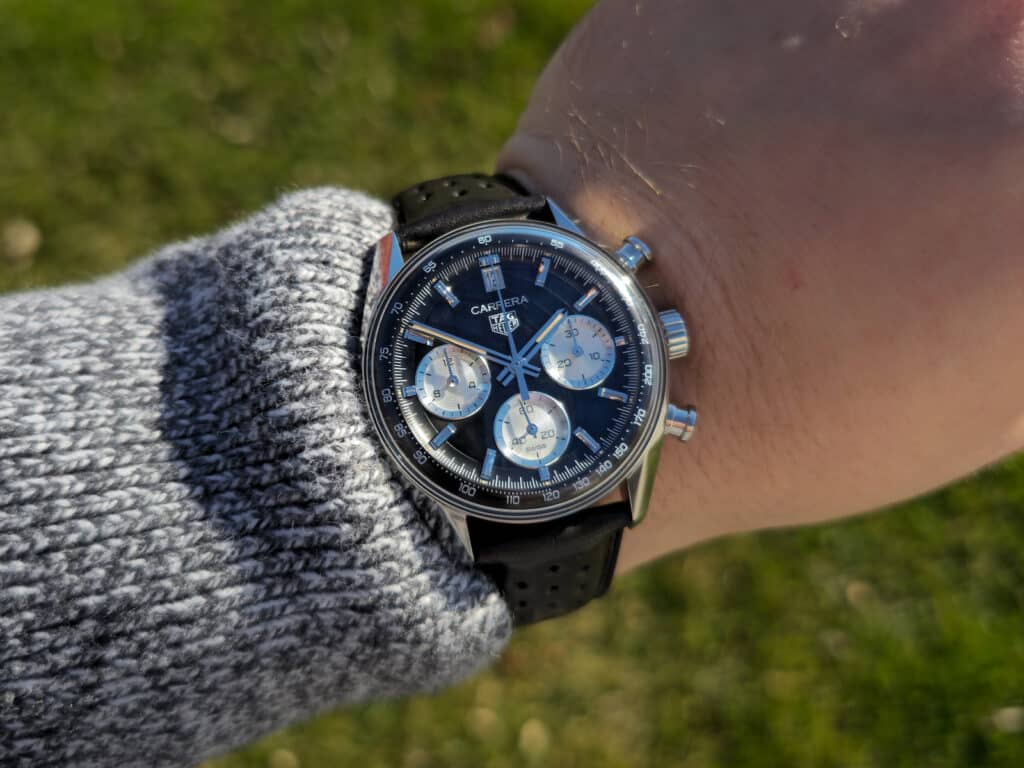
TAG Heuer is indeed one of the best watch brands for enthusiasts seeking sporty chronographs with substance behind the style. The brand’s philosophy has always been about motion, not just in marketing, but in the way its watches feel on the wrist. In our experience, it often strikes a better balance than most. You feel that blend immediately: crisp cases that hint at sportiness, clean bezels that bring timing function into daily use, and chronograph ergonomics that feel intuitive rather than overengineered. During our hands-on time with the Carrera Glassbox Chronograph, we saw how those traits come to life. The pushers click decisively, allowing the crystal to breathe, and the TH20-00 movement tracks time accurately under stress with an impressive 80-hour power reserve. That review confirmed for us that TAG still knows how to turn sporty design into something you’ll want to live with.
Over time, their watches reveal their ambition. Finishing is usually sharper than expected at specific price tiers, and case geometry strikes a balance between presence and wearability. But there’s a trade-off to that energy: some models lean too aggressively for understated use, and the height from domed crystals or thick cases can remind you that this is a sports brand first, dress brand second. Yet even those “imperfections” feel tied to intent, not compromise. When TAG Heuer works (and it often does), it delivers that rush of purposeful design you’d expect from a brand born on the track.
Pros
- In-house chronograph architecture and mechanics that provide an engaging experience.
- Design cues feel intentional, not derivative, even if the case geometry leans bold.
- Excellent sporty ergonomics: pushers, crown, and case transitions are thoughtfully placed and tactile.
- High finishing standards in case surfaces and bezel geometry, showing that TAG still invests where it counts.
Cons
- Bold styling and design flourishes may overshadow the practical comfort for daily wear.
- Height and case bulk, driven by things like domed crystals, can limit cuff-friendliness.
Omega
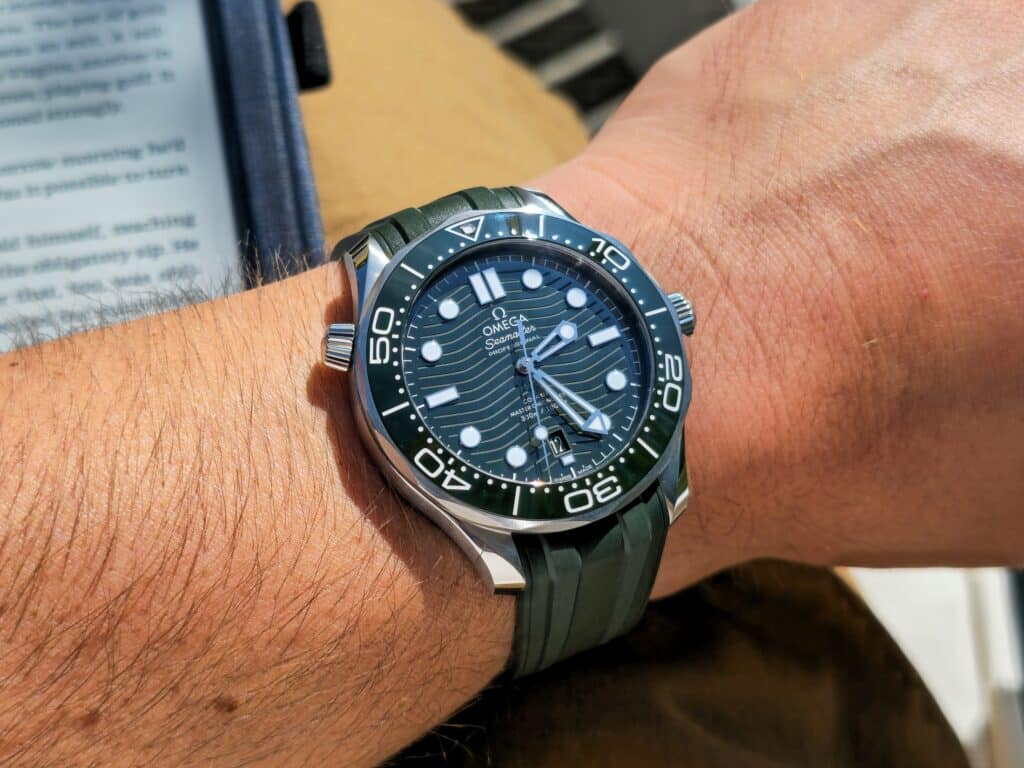
Omega has always walked a fine line between heritage and innovation, and in our experience, it’s one of the few brands that achieves that balance on the wrist, not just in marketing. The Seamaster 300 we reviewed hands-on reminded us that Omega’s tool-watch DNA isn’t theoretical. The ceramic bezel clicks with satisfying precision, the dual-crown threading feels smooth yet substantial, and the Master Chronometer movement withstands daily exposure to magnetic fields without a hiccup. Case finishing is similar to what you’d expect from a modern Omega: crisp transitions between brushed and polished surfaces that play with light rather than scream for attention.
The Railmaster takes the opposite approach with no bezel, no gloss, only clean, magnetic-resistant functionality wrapped in a brushed case that looks better after a few scuffs. In our wear testing, it proved to be one of the easiest Omegas to live with: slim enough under a cuff, legible in any light, and tough enough to forget it’s on.
The trade-offs? Omega’s bracelets can feel overbuilt for their dressier pieces, and some modern models sit thicker than vintage purists would like. Still, whether you’re drawn to the Seamaster’s capable polish or the Railmaster’s restraint, Omega continues to feel like the brand for people who want Rolex-level precision without the posturing.
Pros
- Master Chronometer and Co-Axial movements with strong anti-magnetic performance and tight regulation.
- Excellent case finishing, bevel transitions, and design intelligence.
- Sapphire crystals with AR coatings that don’t look flashy in daily wear.
- Textured dials that evolve dynamically under varying light (Railmaster “denim”, Seamaster wave).
- Thoughtful modern touches like the Niad Lock caseback and refined bezel mechanisms.
Cons
- Skeletonized hands sometimes reduce legibility under glare or low contrast.
- Some models lack micro-adjustment flexibility in their bracelets.
- Thickness and wrist presence may feel more assertive than subtle on smaller wrists.
Rolex
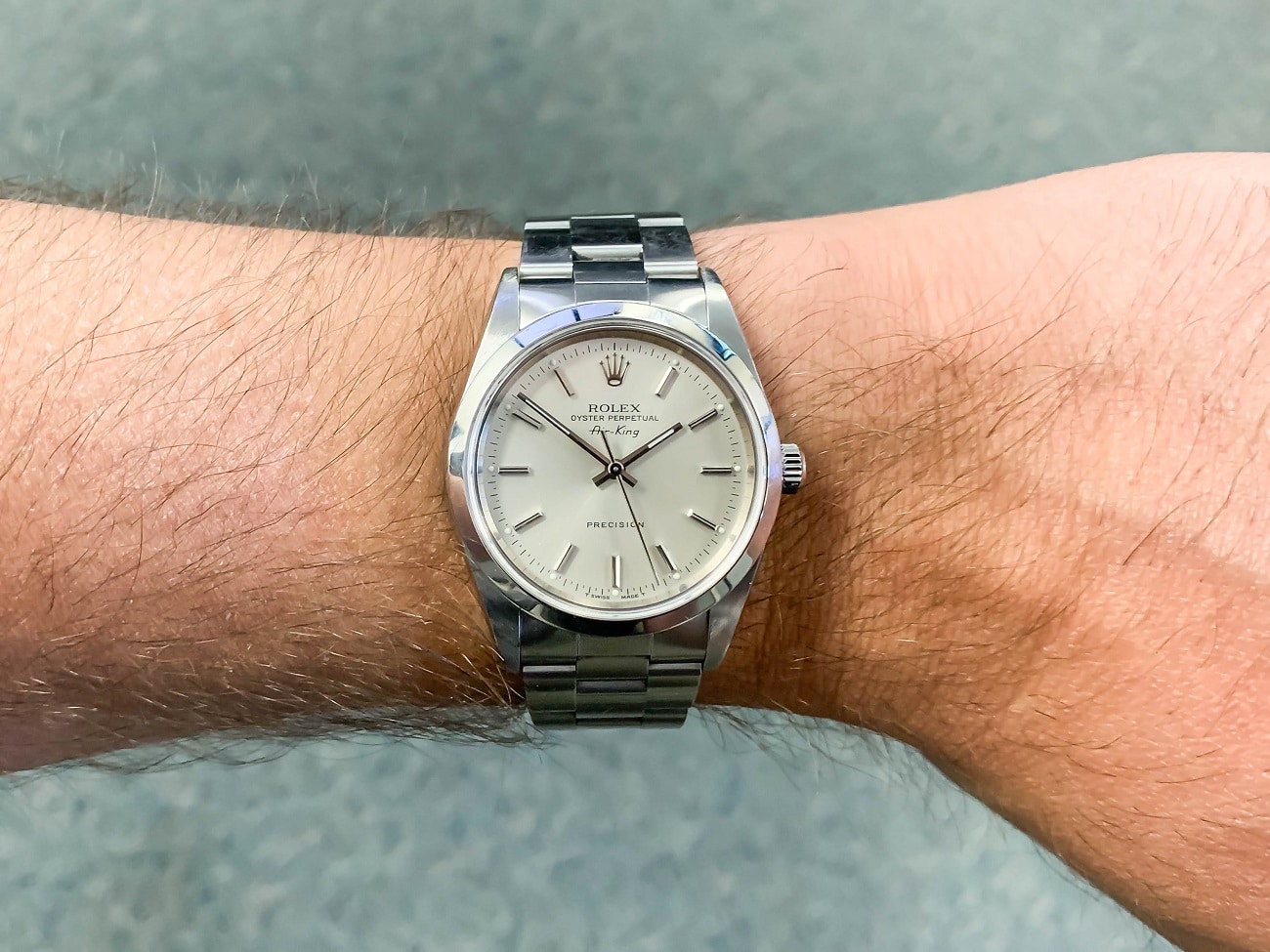
It’s hard to discuss “best watch brands” without mentioning Rolex, and even harder to separate the watches themselves from the noise surrounding them. But that’s precisely what we’ve aimed to do in our hands-on time with models like the Explorer 14270, Air-King 14000, and Submariner. What stood out most wasn’t hype or status, but refinement through restraint. The Explorer in particular, with its 36mm case and sharp, proportionate dial layout, showed us during testing why Rolex has become synonymous with timeless design. The smooth sweep of the seconds hand, the tactile click of the crown, and the subtle wrist presence never shout for attention.
That same disciplined approach extends across their tool-watch lineup. The Air-King 14000 also demonstrated how Rolex mastered simplicity long before modern luxury redefined it. The dial is silver with a subtle sunburst radiating out from the middle, the bracelet’s size and taper are appropriately scaled, and the case finishing is indeed Rolex-like: tight without excess. The Submariner we tested continues to anchor the brand’s identity: robust 300m water resistance, one of the best unidirectional rotatable bezels, and consistent movement accuracy that’s almost boring in its reliability.
However, wearing a Rolex in the long term also highlights the brand’s paradox: it’s nearly impossible to separate ownership from perception. These are watches designed to blend into daily life, yet they rarely do, thanks to their scarcity and collectors’ obsession. Still, judged purely on merit, Rolex remains one of the few brands where the hype has a technical backbone to support it.
Pros
- Benchmark build quality and movement reliability across the lineup.
- Iconic, time-tested designs that stand the test of time.
- Exceptional wearability through balanced case geometry and finishing.
- Strong value retention, community, and global service network.
Cons
- Limited availability and inflated secondary market pricing.
- Conservative design evolution across models.
- Brand reputation often overshadows the watches themselves.

Co-Founder and Senior Editor
Kaz has been collecting watches since 2015, but he’s been fascinated by product design, the Collector’s psychology, and brand marketing his whole life. While sharing the same strong fondness for all things horologically-affordable as Mike (his TBWS partner in crime), Kaz’s collection niche is also focused on vintage Soviet watches as well as watches that feature a unique, but well-designed quirk or visual hook.
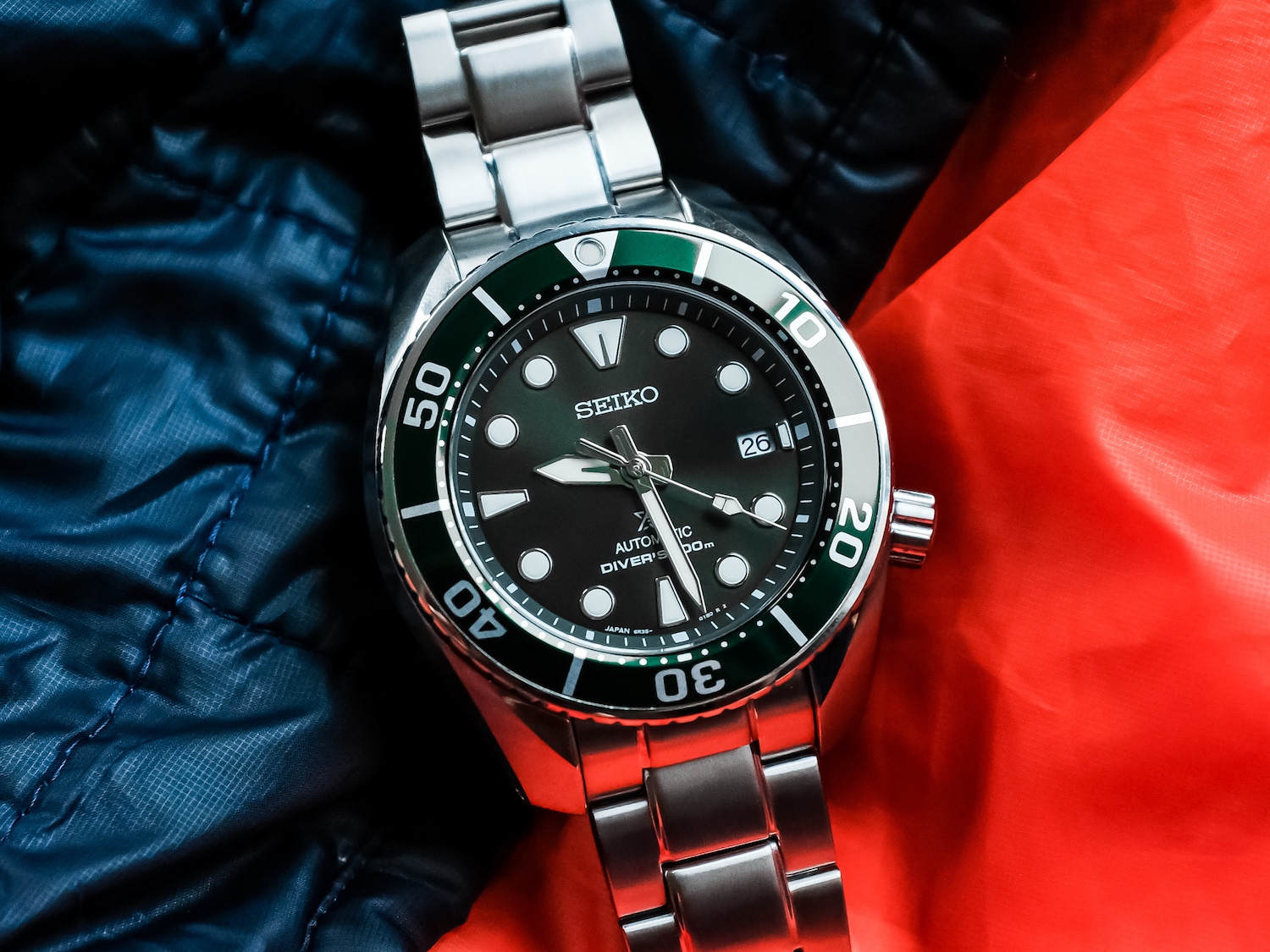
How about Tudor, Invicta, Davosa…?
Hi, Benjamin:
Invicta will be added in the next update for this piece! For Tudor, we’ve recently begun rethinking the brand within our editorial team. Since writing several reviews on them, we’ve experienced (and heard others have experienced as well) issues with their in-house movements and even servicing times. It’s possible we may add Tudor on this list in a future update, but we’re still deciding how to proceed there. For Davosa we actually don’t have that much experience with them and we only wanted to feature brands here that we’ve tested hands on.
Best,
-Kaz
Appreciate if you could provide a fair review on Davosa Ternos Professional Diver : 161.571.60. I bought this in Germany back in May2025. I’m interested to know the reliability and quality of Davosa watches in general.
Thanks
CK
Hi, CK:
Ok you got it – Davosa is certainly a brand that our review team has seen come up so we’ll work on getting a review scheduled for them in the coming months.
Best,
-Kaz
What, you don’t like Chris Ward
Hi, William:
Chr. Ward is going to be included in the next update to this piece! We were waiting to see how things net out with the next review we’re planning for the brand before formally including them here.
Best,
-Kaz
I like your list! I wonder what you think about formex though.
Hi, Puri:
We’ve reviewed Formex before and the past reviews we’ve done have been great! However it’s been a while since we’ve done a full hands-on testing of the brand. So we didn’t want to include them on the list until we’re able to conduct another review of them. Hopefully that’s something we can make happen in the next few months to see if we should include them on this list.
Thank you!
-Kaz
Hey great article. I have lived in fashion watch brands for a few years after selling them for a living but are now venturing in to “proper” brands. Would love to see reviews on Certina, Maurice Lacroix, Mido and Baume and Mercier as all on my wanted list. Plus at the cheaper end of the scale Jacques du manoir.
Hi, Mikey:
Oh cool – exciting to hear about how your brand focus is shifting a bit. We have some reviews for Certina, ML, and Mido (not for B&M), but it has been a while since we’ve reviewed any of those brands (hence why they aren’t featured in our list here). But for 2026 we can certainly see about doing new reviews to see if they’re appropriate to include on this list.
Best,
-Kaz